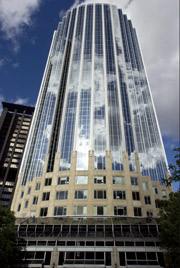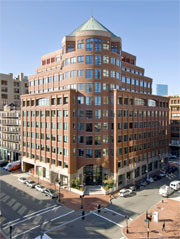
Credit: BBJ
What Boston Class A towers are experiencing vacancy in the midst of a strong office market?
According to the BBJ, “many professional services firms are leaving the more traditional high-rise for gleaming new offices — most often on lower floors — in Boston’s Seaport District. And the wave of technology tenants taking their place aren’t interested in paying top dollar to take over high-rise leases. Rather, they have shown a preference to live, work and play at the center of a buzzing urban neighborhood…That’s increasingly left Boston with multiple towers with blocks of high-rise vacancy, as space closer to the ground gets ever more unavailable.”
The BBJ article further notes, “at the end of March, vacancy in high-rise offices (floors 23 and above) in the Financial District was at 16.3 percent, compared with 10.9 percent in mid-rise space (floors 13-22) and 7.4 percent in low-rise floors (1-12), per Cushman & Wakefield research.”
More information is available on the Boston Business Journal’s website, here.


